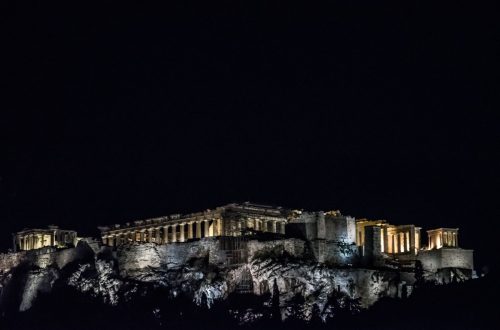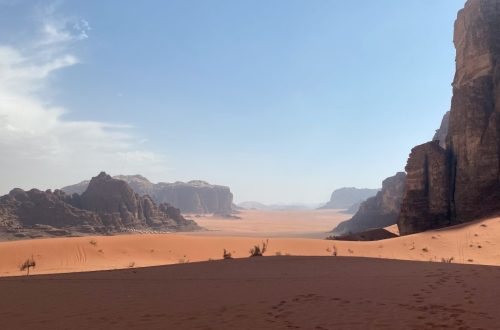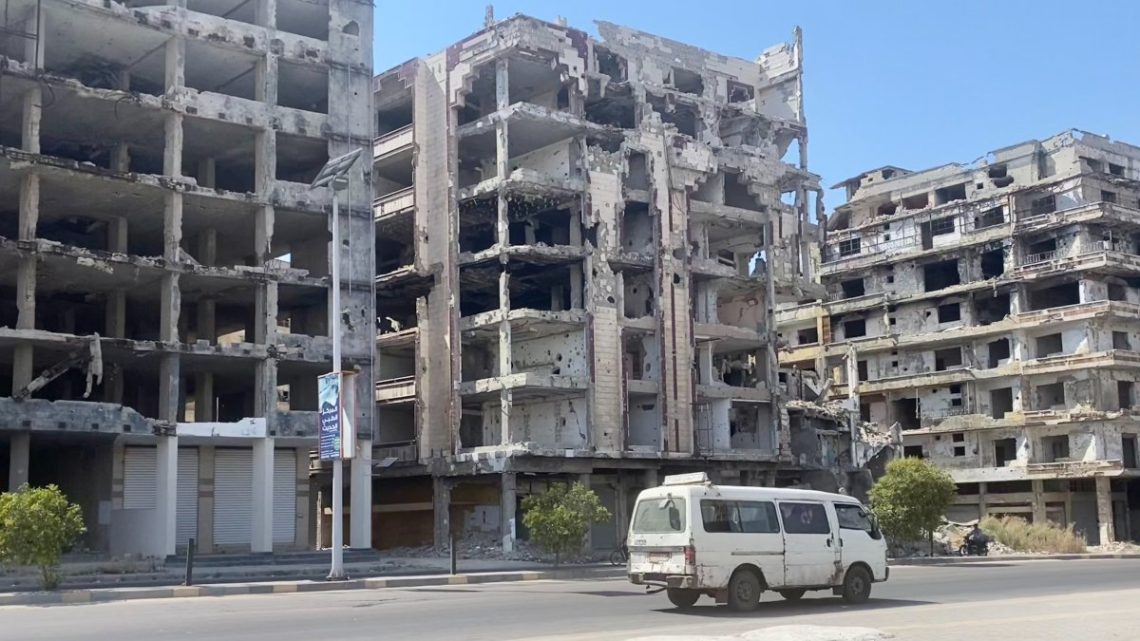
Traveling to Homs, Syria: The Capital of the Revolution
Take a journey with me as we explore the city Homs, Syria. This city, also known as “The Capital of the Revolution” is located in the western part of the country. Its rich combination of influences, history, and unparalleled hospitality, promise an experience filled with unique encounters and discoveries when traveling to Homs.
If you want more to be persuaded, you can read my guide with 25+ compelling reasons to Visit Syria in 2024.
A Little Bit of History
Reflecting on the city’s past, Homs has seen the passage of many civilizations, stretching back to the Bronze Age. It was originally inhabited by the Amorites, a Semitic people who established several city-states in Mesopotamia and Syria.
During the Hellenistic period, after the conquests of Alexander the Great, Homs became a significant center known as Emesa. The city was famous for its worship of the sun god Elagabalus, symbolized by a black stone known as the Emesa stone.
Under Roman rule, Homs continued to prosper. It was during this time that the famous Roman emperor, Elagabalus, originally a high priest of the sun god in Homs, ascended to the throne. The city was also known for its school of Latin rhetoric, which attracted students from across the Roman Empire.
In the Byzantine period, Homs was an important center of Christianity. The city was the seat of a bishopric and several significant ecclesiastical figures hailed from Homs, including Saint Anysia of Thessaloniki.
Following the Islamic conquest in the 7th century, Homs became a part of the Umayyad Caliphate and later the Abbasid Caliphate. The city played a key role in the Muslim resistance against the Crusaders in the 11th and 12th centuries.
When considering recent history, the term “Capital of the Revolution” is often used to describe the city of Homs. This nickname was given to Homs due to its significant role in the Syrian Civil War, which began in 2011. The city was one of the first cities to rise up in rebellion.
Homs was a key battleground during the early years of the war, with intense fighting between government forces and rebel groups. The city’s strategic location, being the third largest city in Syria and located in the central part of the country, made it a crucial point of contention. Today, Homs carries the scars of war but is slowly rebuilding.
Is it possible to Travel to Homs, Syria?
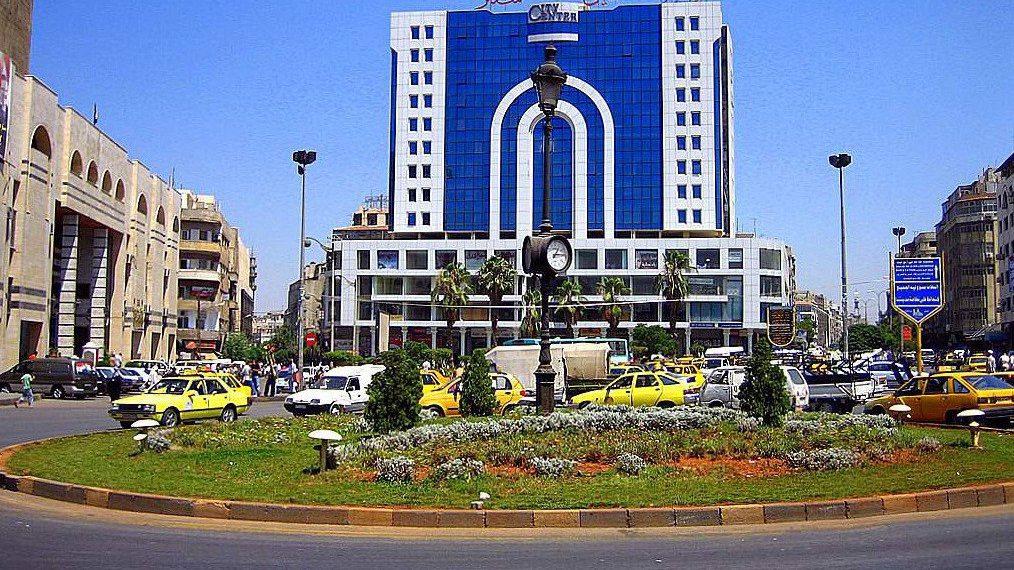
In the last few years, Syria has opened its borders to foreign visitors. In fact, in 2023, more than 1 million foreign visitors and 1.2 million Syrians from abroad chose the Middle Eastern country for their vacation. This was also the first year the country welcomed American tourists.
Americans had been banned from traveling to Syria for the past years years, but that’s no more the case. US citizens can now visit the country as tourists. So, yes, it is very possible to travel to Homs!
For more information about traveling to Syria in 2024, read my comprehensive guide to the country. The first thing you should know about traveling to Syria is that since 2018, you must organize your trip with a local tour operator.
We chose to do our trip with Golden Team Syria. They have one of the most reputable travel agencies in the country. They took care of everything for us before we arrived. They were excellent professionals and tried their best to fulfill every request that we had.
Is it safe to Travel to Homs, Syria?
This is one of the most common questions I got asked from everyone who knew about me traveling to Syria. The answer is rather complicated.
While the Syrian Government has gained back control of the majority of the country, there are still a few places occupied by rebel groups. However, the only places you are allowed to visit when traveling to Syria as a tourist are the ones that belong to the Government. These places have been out of the conflict for quite some time and are safe to visit.
During the entire time I was exploring Homs, I felt as safe as everywhere else I’ve been. For me, it was no different from any other Middle Eastern city.
One of the first things that has to come to your mind when planning a trip is insurance.
Safetywing’s Nomad Insurance is one of the best options available out there. With a maximum coverage of 365 days, they are a great option whether you are a Nomad or not! They offer very low rates, but excellent coverage and immediate support (in a few minutes!). The best part? Nomad Insurance can be purchased even if you have left your home country already.
Lastly, they also cover extreme sports, something that can come in very handy if you are an adventurous soul.
*please note that Nomad Insurance does not cover travel to Syria. However, they are an excellent option for the rest of your trips.
As long as you are with your guide and listen to what they advise you, you‘ll be alright. You will pass many checkpoints and see a lot of soldiers around, but they are there to protect you. You’ll always be greeted with a smile and a warm “Welcome.”
There have been a few moments of tension in recent years. However, the Government always canceled visa approvals whenever they thought the country was unsafe for visitors.
Obviously, I cannot guarantee anyone’s safety when traveling to Homs, or Syria in general, and you always travel at your own risk. However, I can say that there was no place in the country where I felt insecure, even a tiny bit.
Why you Should Consider Traveling to Homs
When traveling around Syria, you’ll most likely use homs as your base. The third-largest city in Syria can indeed serve as a perfect station between trips to Palmyra, Aleppo, and Krak des Chevaliers. Its strategic location in the center of the country makes it a convenient stopover point for travelers exploring these historic sites.
Visiting Palmyra from Homs is a worthwhile excursion. Palmyra, also known as “Venice of the Sands”, is a UNESCO World Heritage site. It’s an ancient Semitic city that offers stunning ruins, including the Temple of Bel and the Monumental Arch. The journey from Homs to Palmyra takes approximately two hours by road. You’ll find everything you need in my ultimate guide to visiting Palmyra.
From Homs, you can also easily reach Aleppo, one of the oldest continuously inhabited cities in the world. Aleppo is famous for its rich history, diverse architecture, and vibrant souks. The journey from Homs to Aleppo is around 3 hours by car. Again, you’ll find everything you need in my guide to the city.
How to get to Homs from Damascus
Traveling from Damascus to Homs can be easily done by car. Homs is approximately 162 kilometers north of Damascus, making it a relatively short journey of about 2-3 hours. Your travel agency will organise everything for you, so you have nothing to worry about.
What is the best time of year to visit Homs, Syria?
Considering Syria’s typical Mediterranean climate, it’s vital to plan your visit strategically. Homs, being inland, embodies a slightly more extreme version of this weather pattern. If you’re seeking balmy temperatures and clear skies, consider planning your trip for the spring months, particularly April and May. During this period, it’s warm enough to pleasantly roam the city but cool enough not to be overwhelmed by heat.
In contrast, the summer months, from June through August, can get sweltering, often reaching temperatures above 30 degrees Celsius (86 degrees Fahrenheit). While some adventurers may appreciate the vibrant summer energy and the sunlit days that offer more time for exploring, those susceptible to heat may wish to avoid this season. If you opt for a summertime visit, remember to take appropriate precautions, like staying hydrated and protecting yourself from the sun.
Autumn, spanning September to November, is also a viable option for those who prefer milder temperatures. The city is cloaked in fall colors, giving a whole different charm to the historic sites. However, this season can be unpredictable with occasional rain showers. Pack accordingly, with layers and waterproof gear being a smart choice.
Visiting Homs during winter, which is from December to February, is less recommended unless you’re fond of chilly weather. The temperature often drops below 10 degrees Celsius (50 degrees Fahrenheit) and it’s also the rainy season. However, the winter landscape offers a beautiful and less crowded perspective of Homs.
Where to stay in Homs
The New Basman Hotel is a popular accommodation choice for people traveling to Homs, Syria. It’s centrally located, making it a convenient base for exploring the city’s rich history and vibrant culture.
The hotel offers a range of amenities to ensure a comfortable stay. These include air-conditioned rooms, free Wi-Fi, and an on-site restaurant serving local and international cuisine. The staff is known for their warm hospitality and readiness to assist guests.
Rooms at the New Basman Hotel are designed with comfort in mind, featuring clean, modern decor and essential amenities. Some rooms offer views of the city, adding an extra layer of enjoyment to your stay.
From the New Basman Hotel, guests can easily access several of Homs’ key attractions. The city’s historic Old Town, the Grand Mosque of Al-Nuri, and the Khaled ibn Al-Walid Mosque are all within a short distance.
The Best Places to Eat in Homs
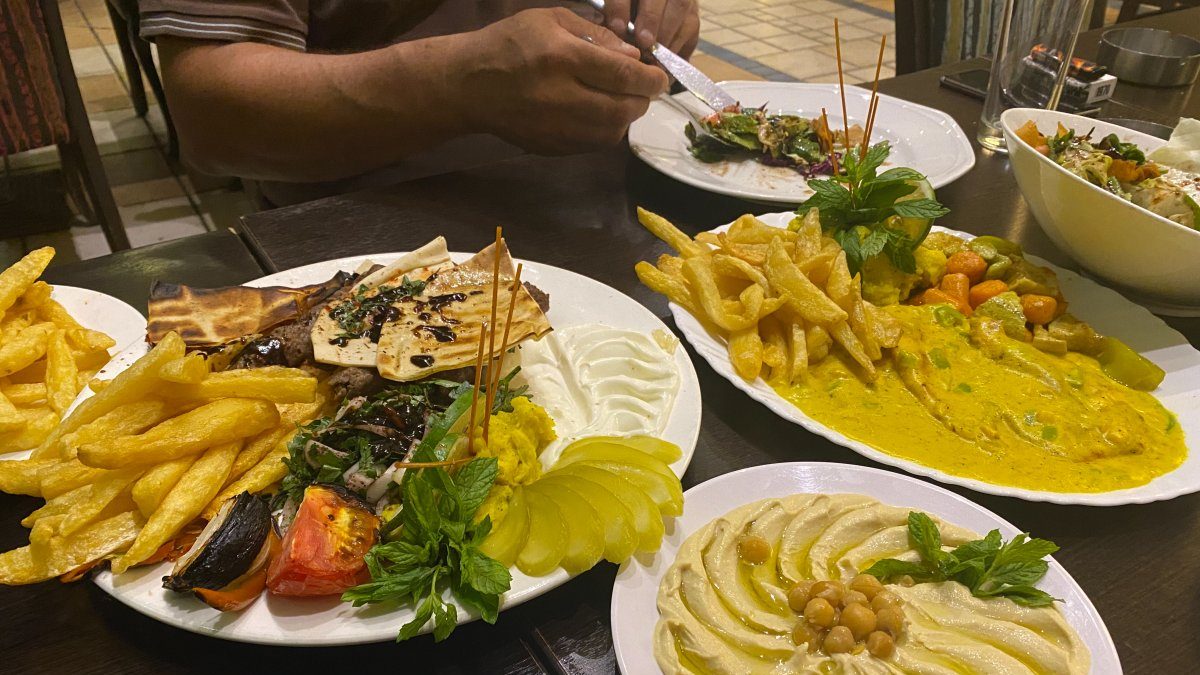
Beyti Restaurant is a must-visit for food enthusiasts traveling to Homs. Known for its luxurious look, it offers a wide variety of local dishes. The chicken with sauce and the kebab are particularly popular, marinated and cooked to perfection, offering a delightful blend of spices and flavors. Hummus is a staple in Syrian cuisine and is served as a starter or side dish. It’s a perfect blend of chickpeas, tahini, lemon juice, and garlic, providing a refreshing taste.
Following your meal, a visit to the most famous Aboullaban sweet shop is highly recommended. Syrian sweets are known for their rich flavors and unique textures. The shop offers a variety of traditional sweets, from baklava, a sweet pastry made of layers of filo filled with chopped nuts and sweetened with syrup or honey, to maamoul, a shortbread pastry filled with dates, pistachios or walnuts.
I am not kidding when I say that I had there some of the best sweets of my life! You HAVE to ask your guide to take you there, you’ll not regret it.

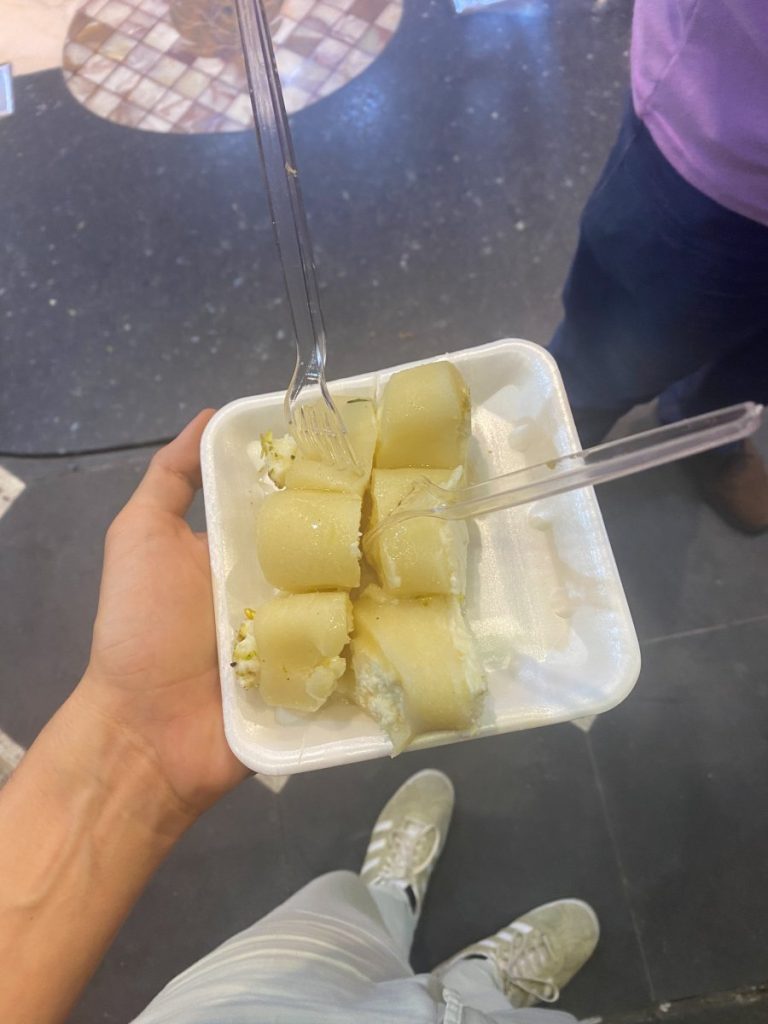
Exploring Homs like a local means indulging in its food culture. The city offers a variety of dining experiences. Each place has its own charm and unique offerings, making your culinary journey in Homs a memorable one. Remember, the key to experiencing the city like a local is to try as many local dishes and sweets as possible, as they offer a direct connection to the city’s culture and traditions.
What are the Best Things to do in Homs, Syria?
See the Khalid ibn al-Walid Mosque
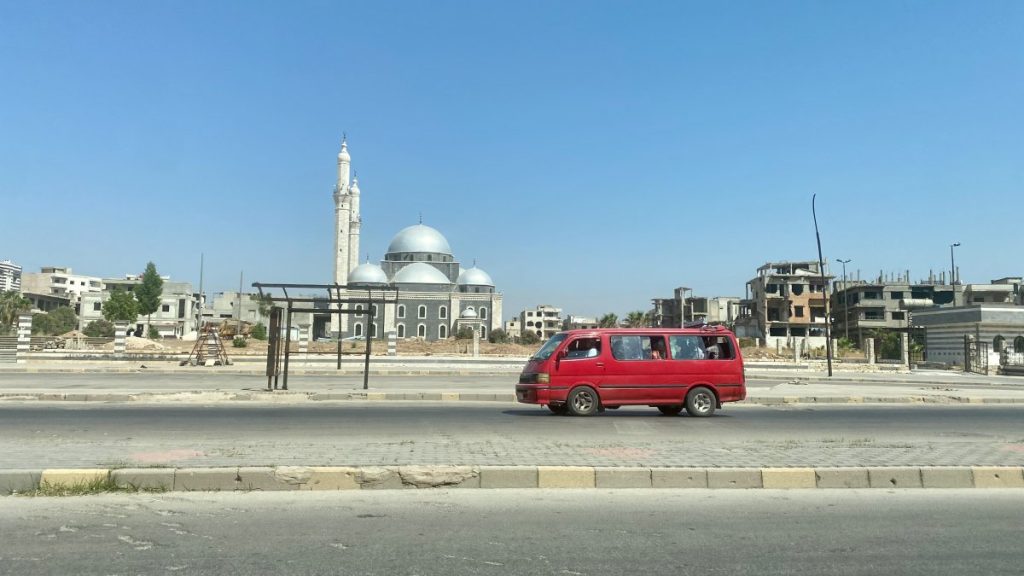
Homs is a city rich in history and culture, offering a variety of attractions for visitors. One of the most iconic landmarks is the Khalid ibn al-Walid Mosque, a stunning piece of Islamic architecture. It’s named after a prominent figure in Islamic history and is a must-visit for its beautiful domes and minarets.
The Khalid ibn al-Walid Mosque is one of the most significant landmarks in Homs, Syria. Named after the prominent Muslim commander Khalid ibn al-Walid, who is buried there, the mosque is a symbol of the city’s rich Islamic history.
The mosque’s architecture is a testament to the aesthetic and architectural prowess of the Islamic world. It features a large dome, two minarets, and an expansive courtyard. The interior is adorned with intricate Islamic calligraphy and geometric patterns, providing a serene and spiritual vibe.
Visiting the Khalid ibn al-Walid Mosque when traveling to Homs offers a unique opportunity to immerse oneself in the local culture and history of Homs. It’s a place where one can learn about the life and achievements of Khalid ibn al-Walid, and the pivotal role he played in Islamic history.
Visit the St. Mary Church of the Holy Belt
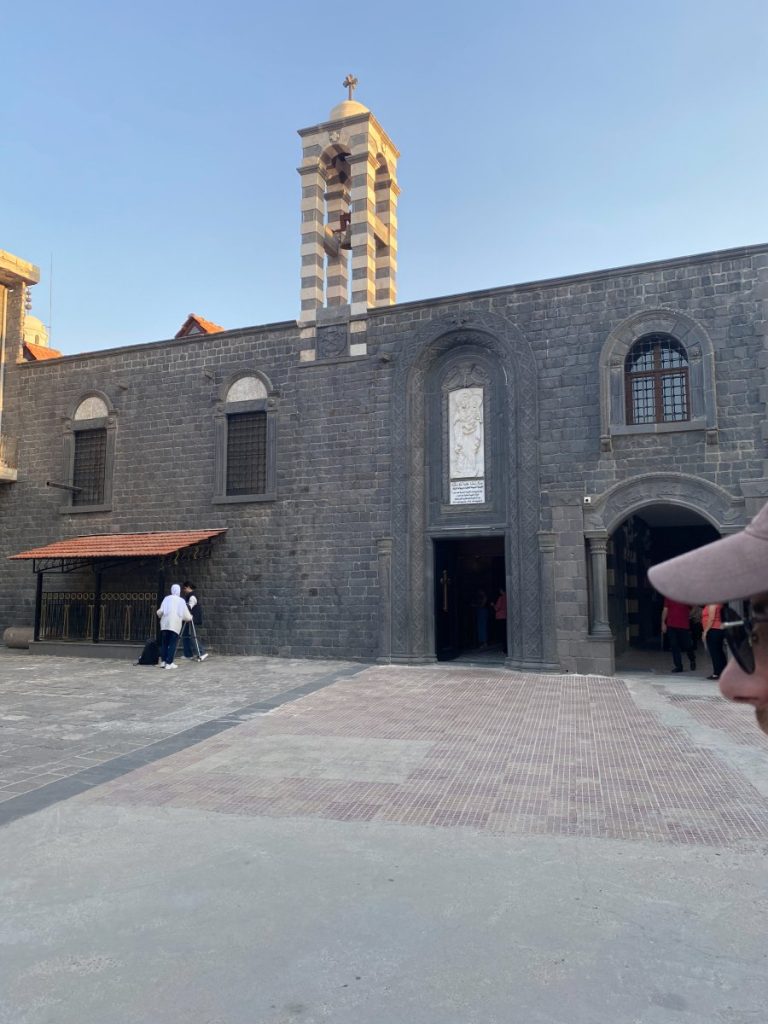

St. Mary Church of the Holy Belt, also known as the Syriac Orthodox Church of Homs, is one of the oldest and most significant Christian landmarks in Syria. It is located in the heart of Homs city, making it a must-visit for any traveler interested in religious history and architecture.
The church is named after the Holy Belt of the Virgin Mary, a revered relic that is believed to have been left by the Virgin Mary before her Assumption. This relic is said to have miraculous properties and is kept in a special shrine within the church.
The architecture of the church is a blend of ancient and modern styles, reflecting the city’s rich history and the church’s continuous use over the centuries. The interior is adorned with beautiful frescoes and mosaics, depicting various biblical scenes.
It is surely a beautiful building. We were lucky enough to be there while a baptism was taking place and we saw part of the ceremony. It was fascinating to realize how far away, but also how not different we all are.
Live like a local at a Square-Theme park
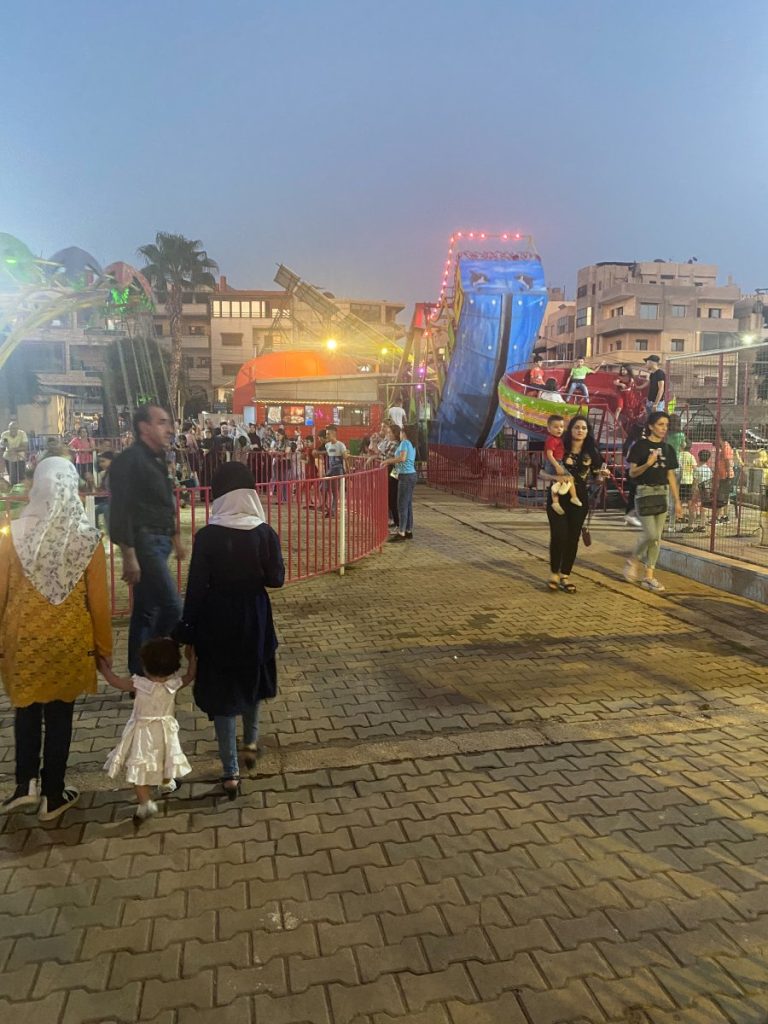
Well, it might sound weird but I’ll explain. In the evening, the squares in Homs (and Syria in general) become a hub for entertainment. You’ll find locals gathering to enjoy performances by street musicians and artists. Furthermore, in the afternoon you’ll find rides like the ones at European Luna parks. I was trully impressed that they can put them up in just a few hours.
Food is an integral part of Syrian culture. At the squares, you’ll find a variety of food stalls selling local delicacies. Don’t miss out on trying the famous Syrian Shawarma or Falafel. It is also your best chance to try some local tea or shisha.
I will be completely honest. Seeing those families gathering, the kids smiling, laughing, and playing, filled my heart with joy. Those kids are the future, and their faces were full of hope. It is a must-do when traveling to Homs.
Enjoy a half-day trip to Krak des Chevaliers
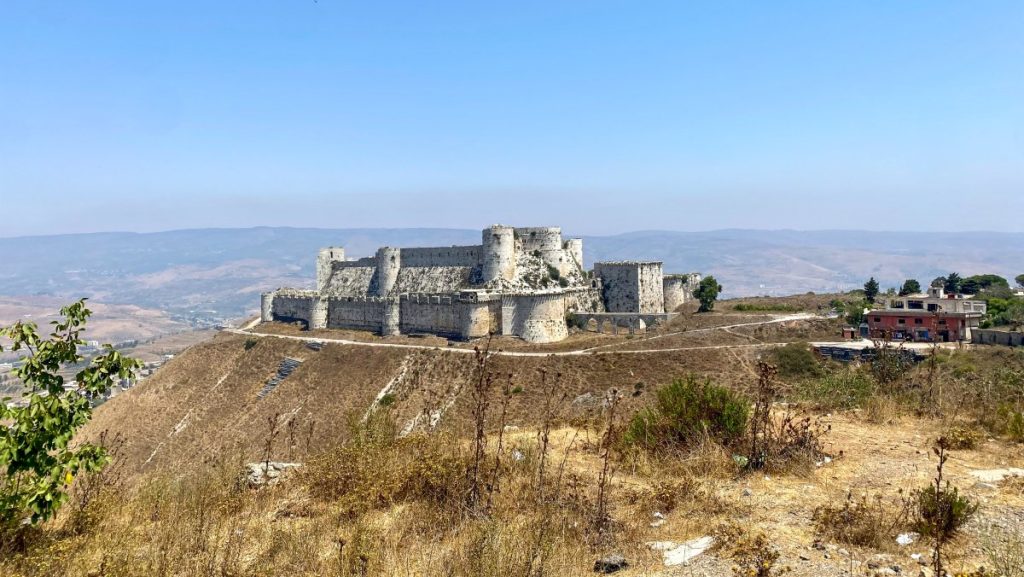
Krak des Chevaliers, also known as Qal’at al-Hosn, is one of the most important preserved medieval military castles in the world. Located approximately 40 kilometers west of the city of Homs, this fortress is a significant stop for anyone visiting the region.
Constructed by the Hospitaller Order of Saint John of Jerusalem from 1142 to 1271, during the period of the Crusades, the castle was a central figure in the defense of the Holy Land. It was built on the site of an earlier castle erected by the Emir of Aleppo.
The castle’s strategic location on a 650-meter-high hill between Homs and Tartus allowed the Hospitallers to control the gap between the mountains and the sea. From here, they could monitor and control the route from Antioch to Beirut, which was vital for trade and military movements.
Krak des Chevaliers is a prime example of the evolution of fortified architecture during the Crusader period. It features a concentric design, with two defensive walls and a moat, and could accommodate up to 2,000 soldiers during a siege. The castle also includes a chapel, a great hall, and several other residential and service buildings.
The castle fell to the Mamluk Sultan Baibars in 1271 after a siege, marking the end of Crusader presence in the region. It remained in use until the 19th century, after which it became an archaeological site and a tourist attraction. The castle is magnificent and you can spend many hours admiring it.
Despite damages during recent conflicts, Krak des Chevaliers remains largely intact and was listed as a UNESCO World Heritage site in 2006. It continues to attract visitors with its impressive architecture, panoramic views, and rich history.
Final Thoughts
As you conclude your journey through Homs, Syria, you’ll find yourself immersed in a city that has withstood the test of time, bearing witness to centuries of history and culture. The resilience of its people, the richness of its heritage, and the beauty of its landscapes make Homs a destination that leaves an indelible mark on its visitors.


